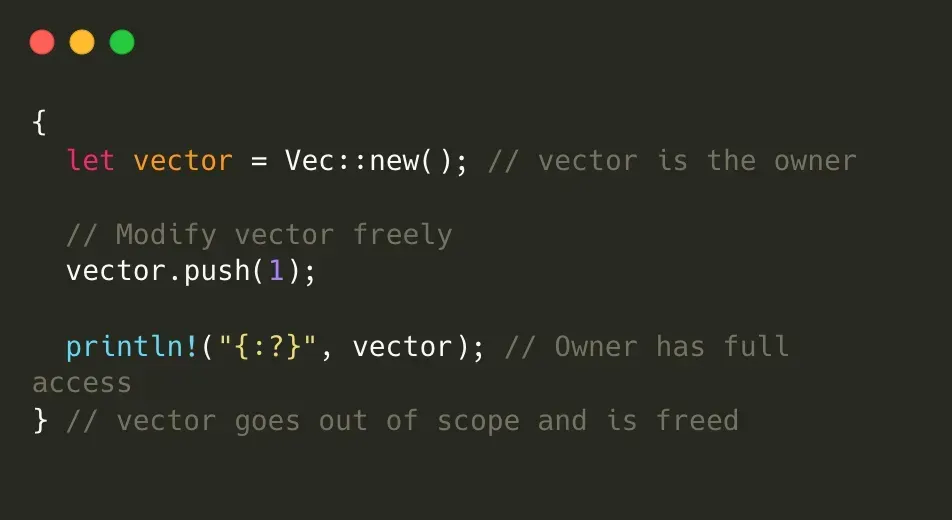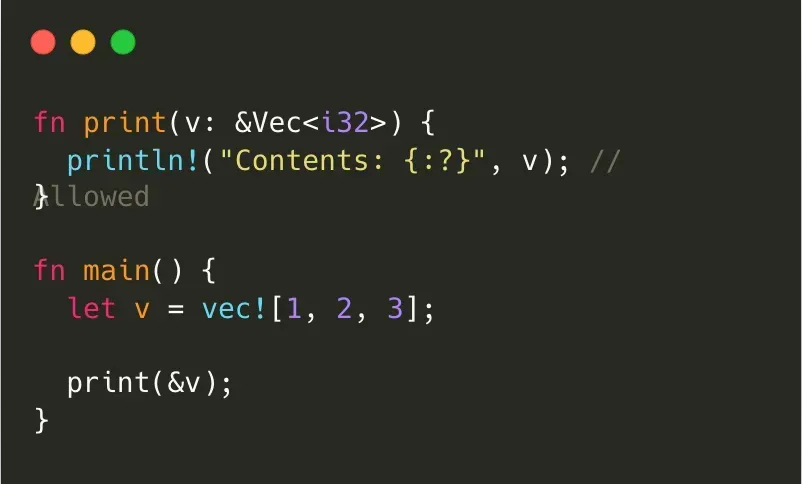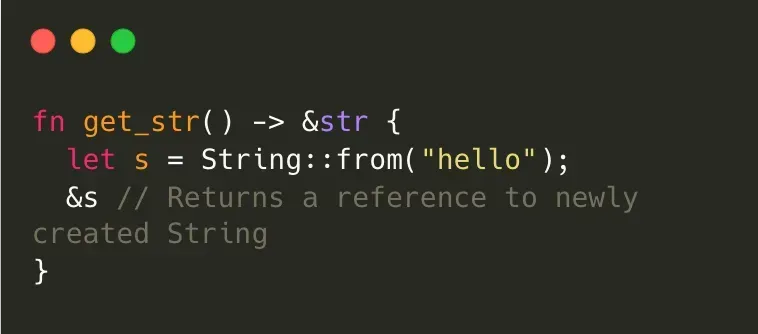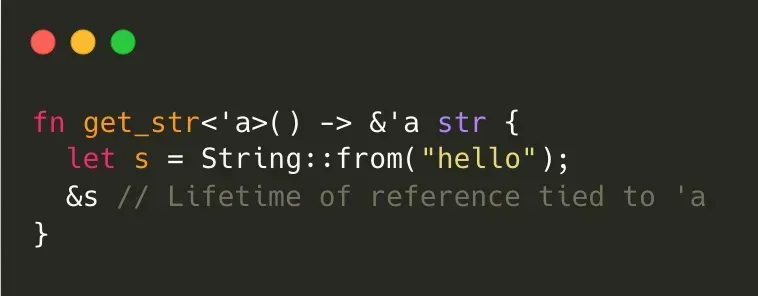Industry Embrace of Rust
Rust has gained credibility across the tech industry thanks to its performance, safety and scaleability:
Cloud Giants like AWS, Azure, Cloudflare and Fastly use Rust for cloud services and edge computing.
Tools & Databases like npm, MongoDB, Vector and Databend leverage Rust’s speed and memory safety.
Operating Systems from Linux to Windows to Fuchsia incorporate Rust for reliability.
Web Tech sees Rust drive Firefox, Deno, CDNs, APIs and more.
Blockchains like Solana, Polkadot and Ethereum rely on Rust for their core infrastructure.
With Rust being battle-tested across domains from tiny devices to massive cloud platforms, it seems primed for long-term industry adoption driven by its unique capabilities.
Zero Bugs and Zero Cost How is This Possible?
Lifetimes represent the scope for which references in Rust are valid. Each reference has an associated lifetime that ensures it always points to valid, allocated data.
For example, consider a function that returns a reference to data created inside the function:
This code does not compile in Rust because the String s is deallocated once the function exits. So the returned reference would be invalid.
To fix this, we need to associate the lifetime of the reference with the lifetime of s. Rust allows specifying lifetime parameters to represent these scopes:
Now the returned reference is only valid for the lifetime 'a, which matches the scope of s. This makes the code safe.
Lifetime analysis is performed at compile time by Rust to catch any invalid references before they cause issues at runtime. They help guarantee memory safety without any runtime cost.
Lifetimes are usually implicit and inferred automatically in Rust. But understanding how explicit lifetimes work unlocks the full power and flexibility of Rust’s borrow checker for advanced scenarios.
Rust is a Breath of Fresh Air
So by now you see why Rust is such a big deal. It gives you both safety and speed — without the usual tradeoffs. Rust sidesteps entire classes of major headaches that have plagued programmers for ages.
Now it won’t click overnight. That borrow checker enforces unique rules; expect a learning curve as you adapt. But developers who embrace Rust tend to become hooked. The superpowers are just too good. Leaders like Microsoft, Google and AWS are betting big on Rust too. They want what it brings — secure, high-performance code. And Rust’s ecosystem expands daily. Rust may never become as popular as Java. But not every tool needs to do everything. Rust solves nasty problems in computing at the lowest level. It makes programmers happy along the way. So while it may never be used everywhere, Rust punches way above its weight class. And working with it just might rekindle that coding joy and thrill that drew you to programming originally. That alone makes Rust worth mastering.
Over the past decade, an exciting systems programming language called Rust has rapidly gained adoption across the industry. Originally created by Mozilla and now stewarded by the Rust Foundation, it has quickly become one of the fastest growing and most beloved languages after finally breaking through to the mainstream in recent years.
Despite being over 10 years old, Rust was mostly an academic curiosity and niche language for its first decade. But it now appears to be hitting an inflection point and coming into its own. Surveys show it topping charts as the “most loved language” among developers for years running.
Leading technology companies have started leveraging Rust for key infrastructure, products, and services. But what explains this once niche language’s newfound mass adoption and meteoric rise to prominence? Much of Rust’s success stems from how it creatively tackles long-standing pain points in systems programming.
Specifically, Rust guarantees memory safety without requiring a garbage collector for memory management. It does this via new concepts like ownership and borrowing that statically enforce validity of memory references at compile time. This eliminates entire categories of crashes, vulnerabilities, and bugs that have plagued systems programmers for decades — all without runtime overhead.
In this article, we will explore Rust’s unique approach to memory safety and other key features that make it well suited for performance-critical systems software like operating system components, embedded devices, browsers, and more. We’ll cover concepts of ownership, borrowing, and lifetimes that come together to enable Rust’s guarantees.
Memory Safety Without the Garbage Truck
Rust’s novel concept of ownership establishes clear resource management rules that the compiler rigorously enforces. Each value in Rust has a variable that serves as its unique owner. Ownership confers both responsibilities and privileges:
- There can only be one owner at a time
- The owner has exclusive access to modify or move the resource
- When the owner goes out of scope, the resource is automatically cleaned up
By statically tracking resource ownership as variables enter and exit scope, Rust ensures resources are managed safely and efficiently without requiring manual allocation/freeing or garbage collection.
The owner of a resource is responsible for both its usage while in scope as well as clean up when no longer needed. This simple but strict rule eliminates entire classes of bugs.
We’ll build on ownership through language mechanisms like borrowing and lifetimes that enable sharing references to resources in well-defined ways. But ownership establishes the foundation.
Code Examples

Code Examples

Code Examples

Code Examples

Code Examples

Concurrency Fearless by Default
A key innovation in Rust is the concept of borrowing. Borrowing allows access to data that is owned by someone else in a controlled manner. When a variable is borrowed, it creates a temporary reference to the resource that enforces rules about valid access at compile time.
Borrowing in Rust comes in two flavors immutable and mutable borrows. Immutable borrows use the & operator. These allow read access to the data, but prevent modifying it as long as the borrow exists:
Mutable borrows use the &mut operator. These allow both reading and modifying the data, but can only have one active mutable borrow at a time:
The Rust compiler (known affectionately as “the borrow checker”) ensures these borrowing rules are satisfied. This prevents invalid references and ensures memory safety without any runtime costs.
Next we’ll explore Rust’s concept of lifetimes, which represent the scope for which borrows are valid…




